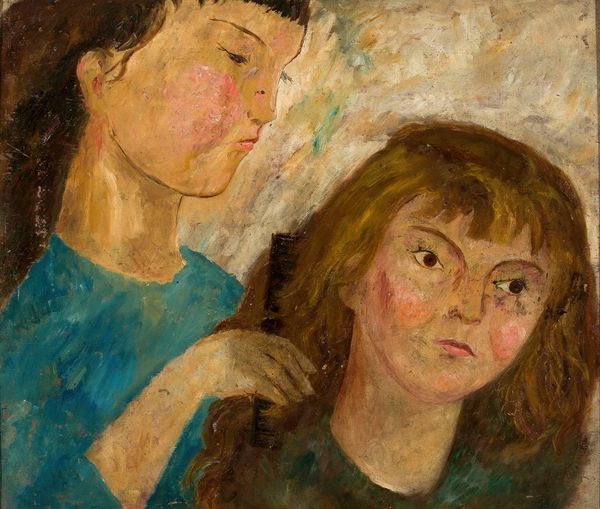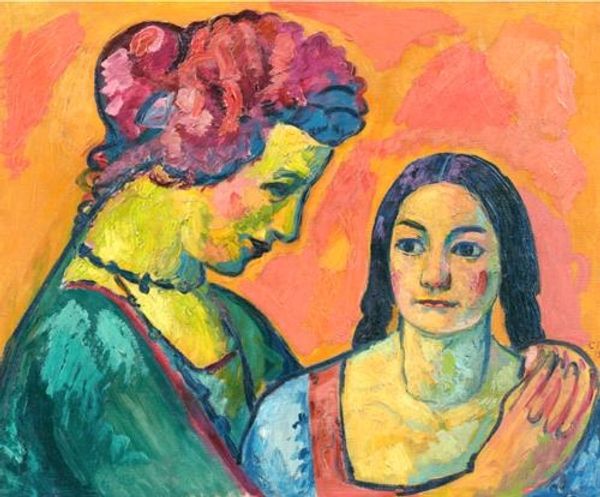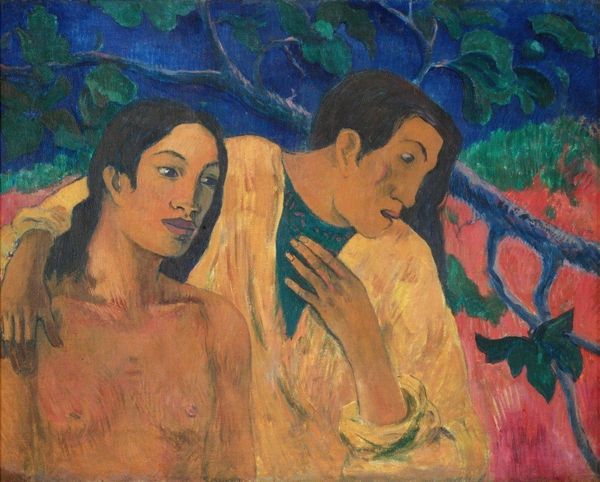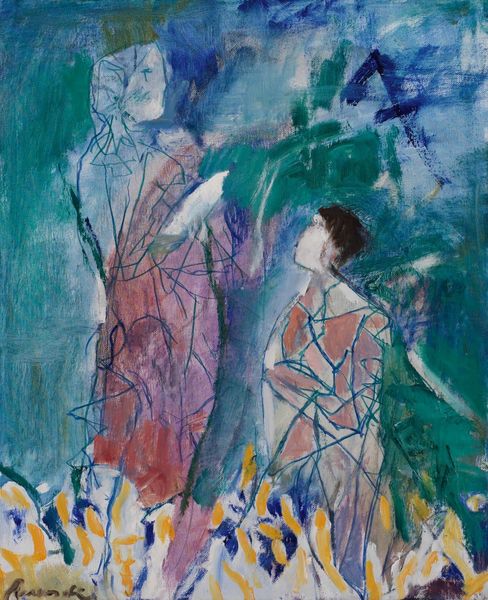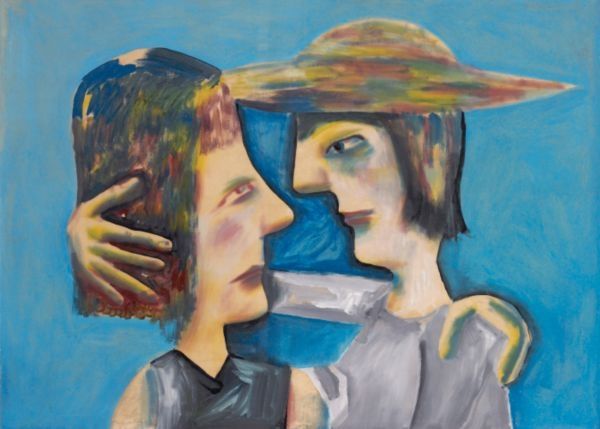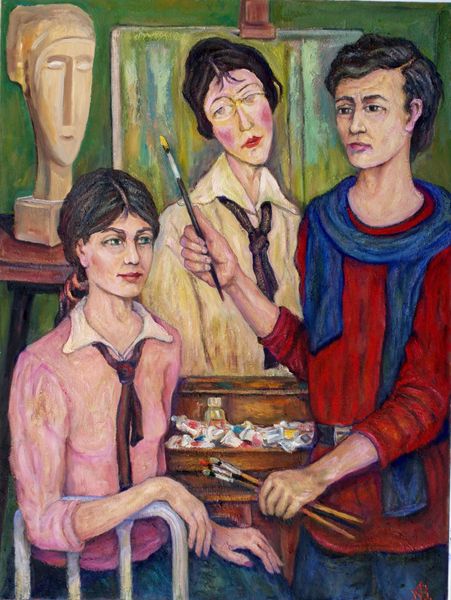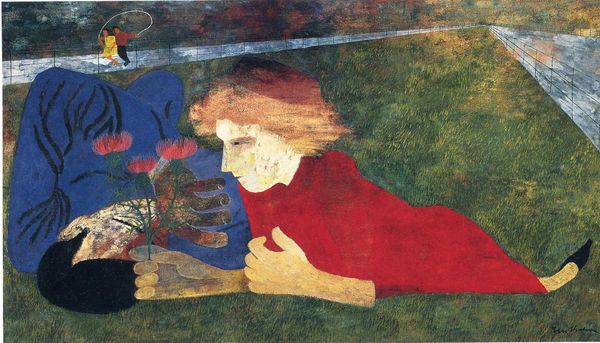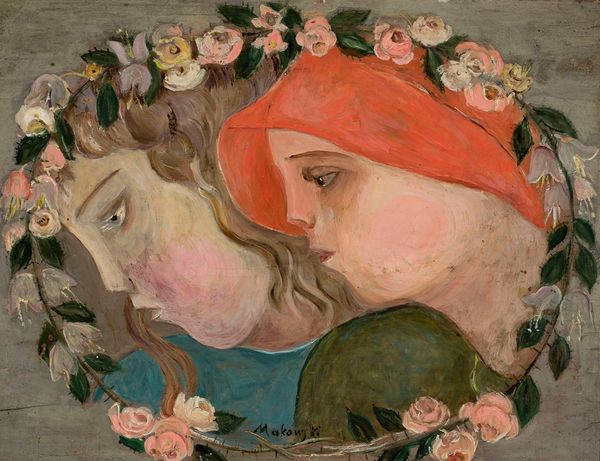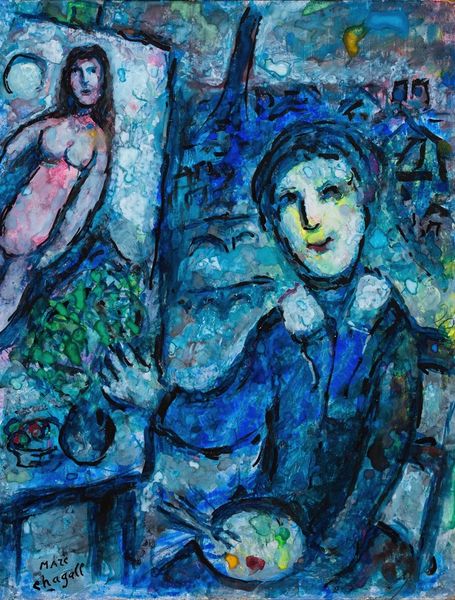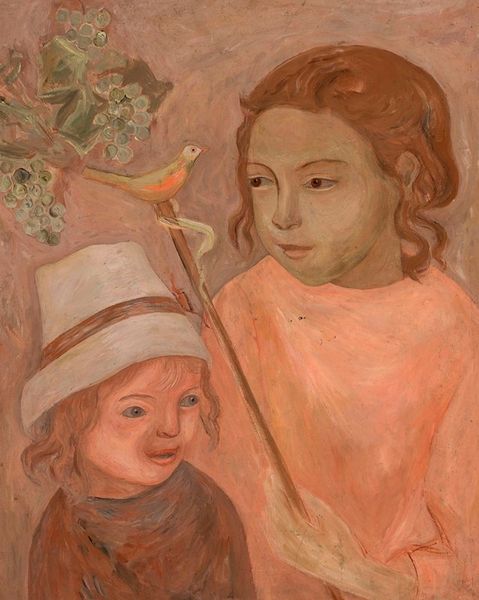
Copyright: Public Domain: Artvee
Editor: Here we have Tadeusz Makowski's "Bucolic" from 1920, done with oil paint. The figures and vibrant colors give the painting such a whimsical, dreamlike quality. What strikes you when you look at this piece? Curator: The artist’s method of applying paint in short strokes catches my attention. Notice how this technique yields not merely figures, but figures defined by the very texture and dynamism of the medium itself. Consider the relationship between the color palettes used for each child; does this deliberate distinction influence how we perceive them as individual figures within the unified composition? Editor: That’s interesting; I was too busy looking at the light to think of individual elements like that. They feel almost like two halves of a whole, now that you mention it, joined by the composition. Are those asymmetries in the faces intentional? Curator: Quite possibly. Focus on the painting’s engagement with perspective; specifically, the way that traditional rules are undermined, flattened perhaps, to bring our attention to the formal qualities of the painting rather than verisimilitude. How does the deliberate choice to move away from realism inform your viewing experience? Editor: I guess it's a reminder that I'm looking at a painting, at artifice. I see the surface differently now. Thanks. Curator: Indeed. We begin to unravel the intention through meticulous assessment of its elements and its visual language. Editor: Exactly. It also makes me consider how different art movements influence each other, playing on contrasts. It opens the door to deeper investigation, I agree.
Comments
No comments
Be the first to comment and join the conversation on the ultimate creative platform.
